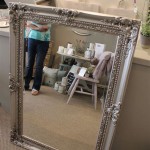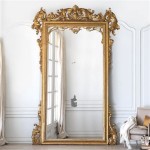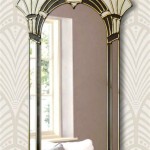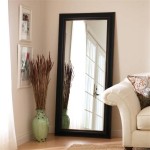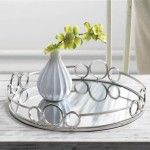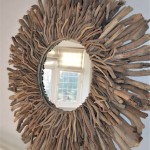Do Concave Mirrors Produce Inverted Images?
Concave mirrors, with their inwardly curving reflective surfaces, possess unique optical properties that differentiate them from other types of mirrors. One of the key characteristics of concave mirrors is their ability to produce both inverted and upright images, depending on the object's position relative to the mirror's focal point. Understanding this behavior requires a closer examination of the principles of reflection and image formation.
The focal point of a concave mirror is the point where parallel rays of light converge after reflection. The distance between the focal point and the mirror's surface is known as the focal length. The center of curvature, another important point, represents the center of the sphere from which the mirror's surface is a section. The radius of curvature is the distance between the center of curvature and the mirror surface, and it is twice the focal length.
Image formation in concave mirrors relies on the laws of reflection. These laws state that the angle of incidence, the angle between the incident ray and the normal to the surface, is equal to the angle of reflection, the angle between the reflected ray and the normal. By tracing the paths of light rays emanating from an object and reflecting off the mirror's surface, one can determine the location, size, and orientation of the image.
When an object is placed beyond the center of curvature of a concave mirror, the reflected rays converge to form a real, inverted, and diminished image between the focal point and the center of curvature. A real image is one that can be projected onto a screen, as the light rays actually converge at the image location. Inverted refers to the image being upside down compared to the object. Diminished indicates that the image is smaller than the object.
As the object moves closer to the center of curvature, the image also moves closer to the center of curvature and grows in size. When the object is placed exactly at the center of curvature, the image is also formed at the center of curvature. In this case, the image is real, inverted, and the same size as the object.
When the object is located between the center of curvature and the focal point, the image forms beyond the center of curvature. The image is real, inverted, and magnified, meaning it is larger than the object. This property of concave mirrors is utilized in telescopes to magnify distant celestial objects.
A significant change in image characteristics occurs when the object is placed at the focal point. When this happens, the reflected rays are parallel and do not converge. Therefore, no real image is formed. Instead, the reflected rays appear to originate from a point at infinity. This characteristic is exploited in searchlights and headlights, where a light source placed at the focal point produces a parallel beam of light.
The most dramatic difference in image formation occurs when the object is placed between the focal point and the mirror's surface. In this scenario, the reflected rays diverge, and no real image is formed. However, if one extends these diverging rays backward, they appear to converge behind the mirror. This point of apparent convergence is where a virtual image is formed. A virtual image cannot be projected onto a screen as it does not result from the actual convergence of light rays. The virtual image formed by a concave mirror when the object is between the focal point and the mirror is upright and magnified. This property is utilized in cosmetic mirrors to provide a larger view of the face.
The magnification of an image formed by a concave mirror is the ratio of the image height to the object height. It can be calculated using the distances of the object and image from the mirror. A positive magnification indicates an upright image, while a negative magnification indicates an inverted image. The magnification can be greater than, equal to, or less than 1, corresponding to magnified, same-sized, or diminished images, respectively.
The relationship between the object distance (u), image distance (v), and focal length (f) of a concave mirror is governed by the mirror equation: 1/u + 1/v = 1/f. This equation allows one to calculate the image distance given the object distance and focal length, or vice versa. Using sign conventions, where distances in front of the mirror are considered positive and distances behind the mirror are negative, the mirror equation accurately predicts the location and nature of the image.
In summary, concave mirrors can produce both inverted and upright images depending on the object's location relative to the focal point. Understanding the interplay between object distance, image distance, focal length, and magnification is crucial for predicting the characteristics of images formed by these mirrors and for utilizing their properties in various optical applications.

Concave Mirror

Image Formation By Concave Mirrors

Can Concave Mirror Form A Virtual Image Quora
If A Concave Mirror Forms Real Inverted Image In Front Of The Then How Can We See Our Behind Like Spoon Quora
Can Concave Mirror Form A Virtual Image Quora

What Is The Nature Of Image Formed By A Concave Mirror Real And Invertedb Virtual Erectc Depends On Position Objectd Erect

Why Can We See Our Inverted Image Inside A Concave Mirror When The Is Formed In Front Of It And Not Behind Quora

A Concave Mirror Produces Virtual Image That Is Three Times As Tall The Object 20 Cm In Front Of I Sketch Location With

Question Comparing The Sizes Of Images Produced By A Concave Mirror Nagwa

Draw A Ray Diagram Showing How Concave Mirror Can Be Used To Produce Real Inverted And Diminished Image Of An Object

